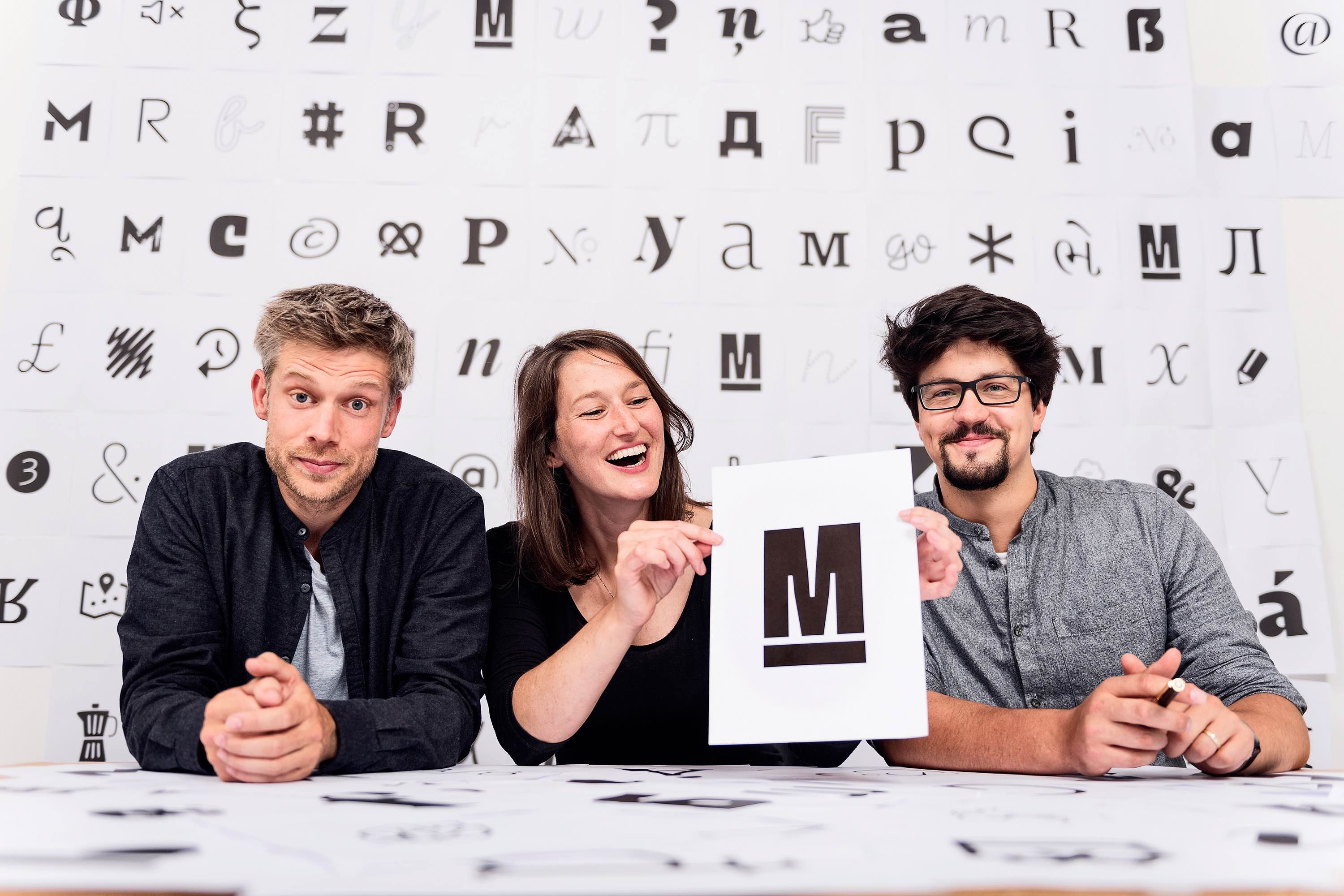Nestled just a few steps away from Santa Croce Cathedral in beautiful downtown Florence, Italy, Zetafonts is a type foundry that specializes in crafting unique and inventive type designs for a global retail marketplace.
Established by Debora Manetti, Cosimo Lorenzo Pancini, and Francesco Canovaro, Zetafonts has been working in the type design industry for well over a decade now. During their tenure, they’ve watched popular font trends come and go, yet their work consistently strikes a balance between innovation and timelessness. They work with a number of graphic designers and typographers to craft state-of-the-art type designs that not only provide beautifully finished typography, but that also offer a high degree of functionality and versatility to the designers who use them.
We spoke with Zetafonts recently to learn more about their foundry’s day-to-day operations and their insight into working in the field of type design.
As you pass Santa Croce Cathedral on your way to their studio space, one can’t help but take note of the inscriptions in the marble of the building itself – engravings that actually inspired Herman Zapf’s own design for Optima. Once inside the studio, Zetafonts’ workspace feels like the stuff of legend: a gorgeous building with earthenware tiles and wooden rafters is a welcoming environment that inspires creativity.
All of the designers at Zetafonts work on MacBook Pro personal computers, using mainly Glyphs and the Adobe Creative Suite to craft their letter sets. Four type designers, two graphic designers, and a marketing and sales manager work together in-house.
Zetafonts absolutely loves the work they do. Their biggest challenge is making a statement in an overcrowded market for type designs. “With so many skilled designers producing hundreds of new fonts each month, the real challenge is to try to create typefaces that will spark the attention of potential users, inspiring design choices and styles,” they said. To tackle that challenge, Zetafonts relies on their experience in branding and graphic design. They explore a design-related problem and seek to create a type design that will solve it, while always keeping an eye on current trends and styles.
Over the most recent decades, type design has become more and more of a tech-driven profession. Zetafonts told us that its evolution is stimulating but that it can also be rather anxiety inducing, as well.
“As new media, formats and technologies evolve, we can’t avoid thinking that the market could change dramatically, making today’s standards obsolete in few years,” they observed.
Technology has indeed given rise to more opportunities for time management, particularly because for many designers, their office remains wherever their laptop can go. There’s a lot of freedom to be found in our modern reality through global interconnectivity, as well; the world really is right at your fingertips and typographers have access to a worldwide marketplace. That said, trying to live more and more in the present moment, Zetafonts told us that it is harder to create something that will truly be able to stand the test of time.
Along those lines, they’ve also observed that the font industry has become rather similar to the fashion industry. There are “many players influencing each other and producing hastily to catch the market trends and tastes,” they noted. At times, this means you’ll find many similar typefaces emerging as they try to reflect contemporary trends. Zetafonts calls it a widespread desire for “the newest facelift of an old typeface.” Alas, what rises to popularity very quickly today may soon find itself inconsequential tomorrow.
That said, Zetafonts is in the industry for the long haul. Perhaps the one thing they would change if they could is for digital markets to stop encouraging that behavior. Instead, they feel it should focus on giving more exposure to new trends and unexpected designs, rather than pushing yet another cookie-cutter revamp of an old favorite just because it’s commercially viable.
Numerous advances in the type design industry have emerged over recent years, from OpenType to OpenType-SVG and Variable fonts. Many of them are still rather niche, belonging only to those working in the design arena. Zetafonts feels that some of the options available with these advances remain too obscure for the casual font user. “If software developers don’t start to address this need, they will probably keep being obscure design gimmicks rather than widely used tools,” Zetafonts said. To that end, they feel that apps which make use of OpenType and Variable fonts could stand to make more people aware of their possibilities to spread the word.
While they do make a point of including usable technology in their own work, they remain focused on adapting to the needs of graphic designers in their own design process, rather than catering to the latest advances in technology. This enables them to create trusted graphic design tools that there for the sole purpose of displaying the latest greatest fad in font technology.
Zetafonts did offer some advice to those who are considering a career in type design. “First of all, study and learn as much as possible from the best schools and the work of the past masters,” they told us. “Then, don’t obsess on a single project, but learn to test your skills in many different typeface styles and design briefs.” They suggest that while a fledgling typographer should work toward consistency in quality and usability, they should also explore the unexpected and exciting to stand out from the crowd.
Zetafonts currently offers more than 55 products through YouWorkForThem, a varied range of handmade scripts, contemporary sans serifs, elegant serifs, and unique display fonts to suit an incredible range of project styles and themes. Visit their portfolio to view the rest of their work and bookmark it so you won’t miss any of their future releases!


























